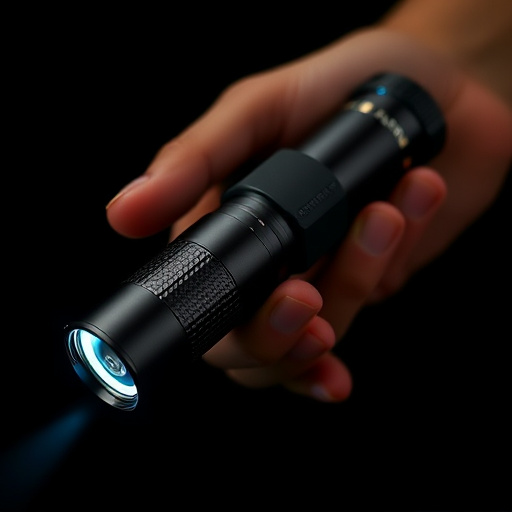Tactical baton retention is a critical skill for professionals using push button expandable batons, which offer versatile length adjustments from a compact form to an extended striking tool. Optimal carry positions include waist-level on a belt or holster for quick deployment and shoulder carry for better control. These innovative batons enhance mobility, stability, and readiness during high-stress situations, making them ideal for law enforcement, security, and self-defense enthusiasts.
In the ever-evolving landscape of tactical gear, efficient baton retention and carry positions are paramount for law enforcement and security professionals. This comprehensive guide delves into the fundamentals of tactical baton retention, exploring advanced techniques that enhance accessibility and improve overall performance. From the revolutionary push button expandable baton to optimal carry positions, discover how these strategies can revolutionize your approach to baton management.
- Understanding Tactical Baton Retention: The Basics
- Push Button Expandable Batons: A Game-Changer
- Optimal Carry Positions for Enhanced Accessibility
- Advanced Techniques for Efficient Baton Management
Understanding Tactical Baton Retention: The Basics
Tactical baton retention is a crucial skill for law enforcement and security professionals, enabling them to effectively manage and deploy their equipment during high-stress situations. At its core, tactical baton retention involves understanding when and how to secure and release a push button expandable baton—a versatile tool that can be extended for added reach and force, or retracted for easy carry and concealment.
The basics of tactical baton retention focus on grip strength, wrist positioning, and the use of body mechanics to ensure control over the baton. Professionals are trained to maintain a firm yet flexible grip, allowing them to deploy the baton quickly when needed while preventing accidental extensions. Wrist placement is key; keeping the wrist straight and aligned with the body helps maintain stability and precision during both retention and strike. This fundamental knowledge forms the backbone of more advanced tactical techniques, empowering officers to utilize their batons as a powerful tool for self-defense and control in various scenarios.
Push Button Expandable Batons: A Game-Changer
In recent years, law enforcement and self-defense enthusiasts have witnessed a significant evolution in baton technology with the introduction of push button expandable batons. These innovative devices represent a game-changer in tactical gear, offering unparalleled versatility and convenience. Unlike traditional fixed-length batons, push button expandable batons allow users to adjust their length on the fly, transforming from a compact, easily concealable form to an extended, powerful striking tool with just a simple press of a button.
This dynamic design provides multiple advantages in various scenarios. Whether in close-quarters combat or requiring a longer reach for crowd control, officers and individuals can adapt swiftly. The expandability feature adds a layer of tactical superiority, ensuring users are prepared for unexpected situations. Moreover, the compacted size when not in use makes it an ideal everyday carry tool, seamlessly fitting into pockets or holsters without sacrificing functionality.
Optimal Carry Positions for Enhanced Accessibility
Optimal carry positions are crucial for tactical professionals who rely on batons as a vital tool for self-defense and crowd control. For efficient accessibility, a push button expandable baton is recommended to be carried in a way that allows for quick deployment. One of the most effective positions is at waist level, with the baton clipped securely to a belt or holster, ensuring it’s readily available when needed. This position maintains balance while providing easy reach during a situation requiring swift action.
Additionally, professionals can opt for a shoulder carry, where the baton is secured across the body, allowing for better control and reducing the risk of accidental drops. In dynamic environments, having the baton within easy grasp promotes confidence and enables rapid response, making it an invaluable asset for tactical operations.
Advanced Techniques for Efficient Baton Management
In the realm of tactical baton retention and carry, advanced techniques for efficient baton management are essential for professionals seeking to enhance their capabilities. One such innovation is the push button expandable baton, designed to streamline deployment and retrieval. This versatile tool allows users to quickly extend or retract the baton with a simple press of a button, ensuring swift access during high-pressure situations. By integrating this technology, first responders can optimize their mobility and control, making them more effective in diverse environments.
The push button expandable baton offers several advantages over traditional designs. Its compact, collapsible form factor enables easy carrying, fitting comfortably in holsters or pockets without compromising readiness. Moreover, the expandable mechanism ensures a secure grip during use, preventing accidental slips or drops. This feature is particularly beneficial for tactical operations where stability and control are paramount, enabling professionals to focus on their missions with enhanced confidence and precision.
In conclusion, tactical baton retention and carry positions are essential skills for law enforcement and security professionals. By understanding the basics and employing advanced techniques, such as using a push button expandable baton, officers can enhance their accessibility and efficiency in various scenarios. Optimizing carry positions further ensures quick deployment when every second counts. Mastering these skills not only improves individual performance but also contributes to safer communities.
